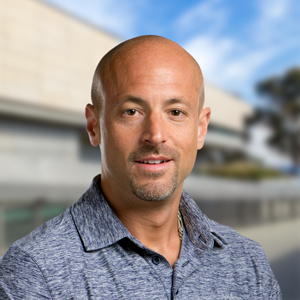Source: Interfolio F180

Phillippe Baran, PhD
Research Focus
In the 20th century the art and science of complex natural product total synthesis defined the frontiers of organic chemistry. Throughout these decades fundamental insights into reactivity and selectivity principles were achieved by these numerous synthetic endeavors. The capability and power of organic synthesis has thus experienced a dramatic increase putting today's synthetic chemists in the position to construct molecules of more or less any degree of structural complexity. The perception defining 'art' in organic synthesis has therefore changed with time and in our opinion is described best by Hendrickson when he addressed the 'ideal synthesis' as one which: 'creates a complex molecule' in a sequence of only construction reactions involving no intermediary refunctionalizations, and leading directly to the target, not only its skeleton but also its correctly placed functionality' (Hendrickson, J.B. J. Am. Chem. Soc. 1975, 97, 5784).This prescient statement truly encompasses and epitomizes the 'economies' of synthesis design many years before ideas of atom, step, and redox-economy were formally galvanized. Now, in 2010, the field has reached an awe-inspiring level, with many proclaiming that synthesis has matured. But before one declares the science of synthesis an endeavor in engineering, one only needs to reflect on the inspiring ease with which Nature crafts large quantities of her most complex molecules (e.g. vancomycin and taxol). Total synthesis in this century must therefore be keenly aware of this ultimate challenge to be able to provide large quantities of complex natural products with a minimum amount of labor and material expenses. The natural consequence of pursuing such a goal is to embrace the Hendrickson dictum (vide supra). Pursuing synthesis in such a way forces the practitioner into the role of an inventor. It naturally also leads to explorations into biology since multiple collaborations can be forged with ample materials.
Education
B.S. (Chemistry), New York University, 1997Ph.D. (Chemistry), The Scripps Research Institute, 2001
Professional Experience
2006-2008 Associate Professor (with tenure), Chemistry, Scripps Research2003-2006 Assistant Professor, Chemistry, Scripps Research
2001-2003 NIH Postdoctoral Fellow with Dr. E. J. Corey, Harvard University
Awards & Professional Activities
2021 Bristol Chemical Synthesis Syngenta Award, Syngenta
2020 Janssen Prize for Creativity
2019 Inhoffen Medal, Janssen
2017 Manchot Research Professorship, Technical University of Munich
2017 The National Academy of Sciences
2017 Emanuel Merck Lectureship
2016 Blavatnik National Laureate in Chemistry, New York Academy of Sciences
2016 ACS Elias J. Corey Award
2015 American Academy of Arts and Sciences
2015 College of Arts and Science Alumni Distinguished Service Award
2015 Reagent of the Year Award
2014 Mukaiyama Award
2013 MacArthur Fellowship, MacArthur Foundation
2013 Royal Society of Chemistry Synthetic Organic Chemistry Award
2012 ACS San Diego Section Distinguished Scientist Award
2011 ISHC Katritzky Heterocyclic Chemistry Award
2010 Thieme-IUPAC Prize in Synthetic Organic Chemistry
2010 ACS Award in Pure Chemistry
2009 Raymond and Beverly Sackler Prize in the Physical Sciences
2007 National Fresenius Award, ACS
2007 Hirata Gold Medal
2006 Pfizer Award for Creativity in Organic Synthesis
2006 Beckman Foundation Fellow
2007 Alfred P. Sloan Foundation Fellow
2006 BMS Unrestricted "Freedom to Discover" Grant, Bristol-Myers Squibb
2006 NSF CAREER Award, National Science Foundation
2005 Eli Lilly Young Investigator Award
2005 AstraZeneca Excellence in Chemistry Award
2005 DuPont Young Professor Award
2005 Roche Excellence in Chemistry Award
2005 Amgen Young Investigator Award
2005 Searle Scholar Award
2005 GlaxoSmithKline Chemistry Scholar Award
Selected Publications
Bruckl, T.; Baxter, R. D.; Ishihara, Yoshihiro; Baran, Phil S. Innate and guided C-H functionalization logic. Accounts of Chemical Research 2012, 45, 826-839.
[View]
Mendoza, A.; Ishihara, Yoshihiro; Baran, Phil S. Scalable enantioselective total synthesis of taxanes. Nature Chemistry 2012, 4, 21-25.
[View]
Su, S.; Rodriguez, Rodrigo A.; Baran, Phil S. Scalable, stereocontrolled total syntheses of (±)-axinellamines A and B. Journal of the American Chemical Society 2011, 133, 13922-13925.
[View]
Gaich, T.; Baran, Phil S. Aiming for the ideal synthesis. Journal of Organic Chemistry 2010, 75, 4657-4673.
[View]
Newhouse, Timothy R.; Lewis, C. A.; Eastman, K. J.; Baran, Phil S. Scalable total syntheses of N-linked tryptamine dimers by direct indole-aniline coupling: Psychotrimine and kapakahines B and F. Journal of the American Chemical Society 2010, 132, 7119-7137.
[View]
Burns, Noah Z.; Krylova, I. N.; Hannoush, R. N.; Baran, Phil S. Scalable total synthesis and biological evaluation of haouamine a and its atropisomer. Journal of the American Chemical Society 2009, 131, 9172-9173.
[View]

